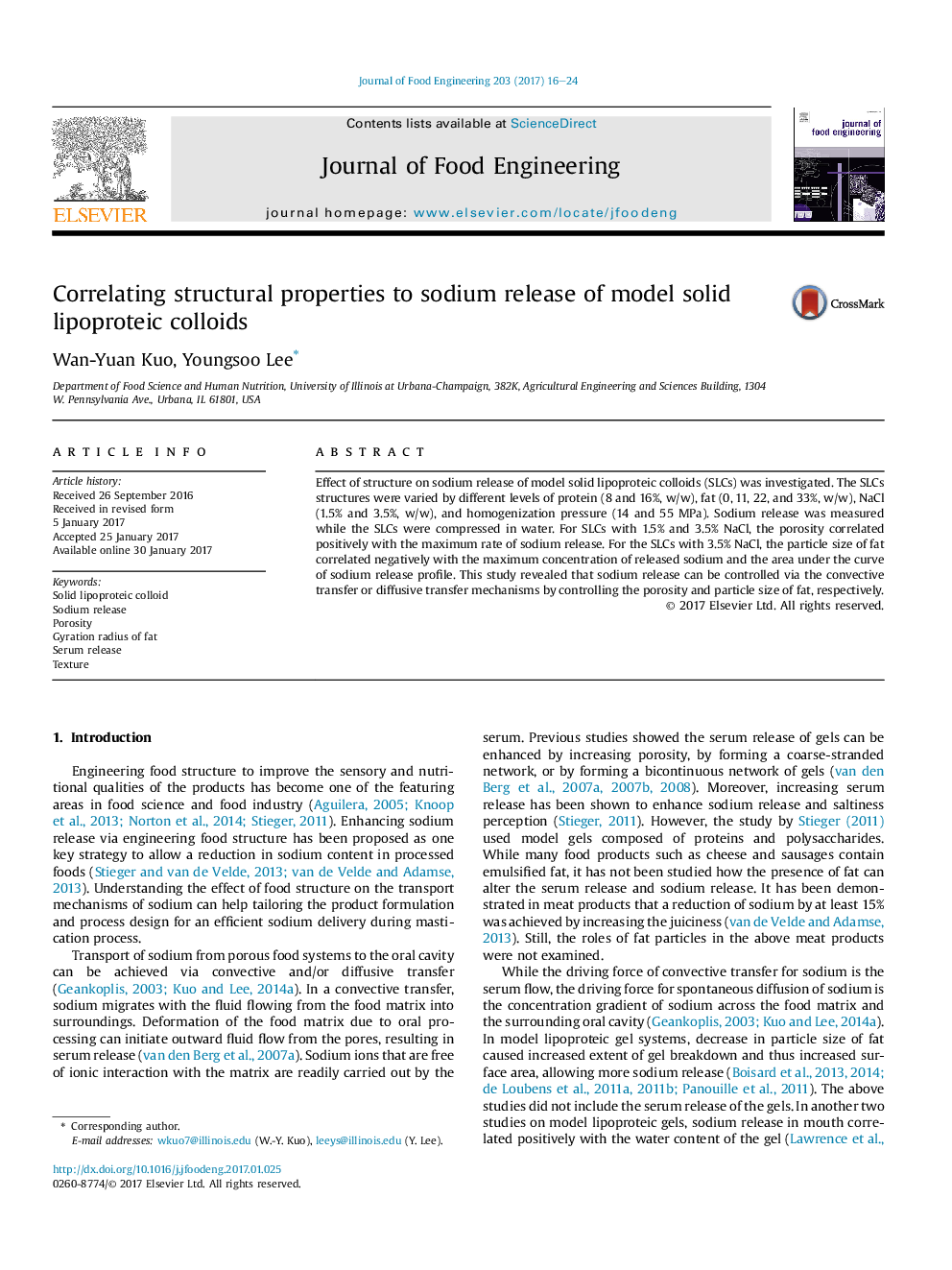| Article ID | Journal | Published Year | Pages | File Type |
|---|---|---|---|---|
| 4909095 | Journal of Food Engineering | 2017 | 9 Pages |
Abstract
Effect of structure on sodium release of model solid lipoproteic colloids (SLCs) was investigated. The SLCs structures were varied by different levels of protein (8 and 16%, w/w), fat (0, 11, 22, and 33%, w/w), NaCl (1.5% and 3.5%, w/w), and homogenization pressure (14 and 55Â MPa). Sodium release was measured while the SLCs were compressed in water. For SLCs with 1.5% and 3.5% NaCl, the porosity correlated positively with the maximum rate of sodium release. For the SLCs with 3.5% NaCl, the particle size of fat correlated negatively with the maximum concentration of released sodium and the area under the curve of sodium release profile. This study revealed that sodium release can be controlled via the convective transfer or diffusive transfer mechanisms by controlling the porosity and particle size of fat, respectively.
Keywords
Related Topics
Physical Sciences and Engineering
Chemical Engineering
Chemical Engineering (General)
Authors
Wan-Yuan Kuo, Youngsoo Lee,
